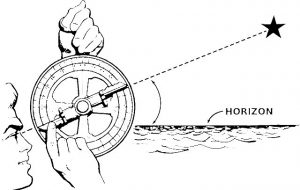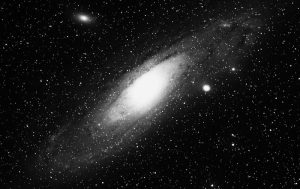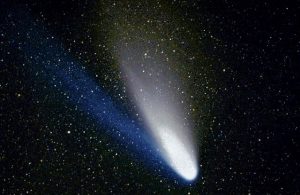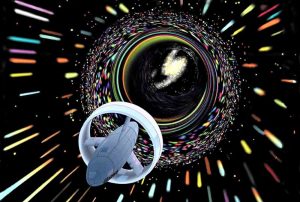Astrolabe
The astrolabe is a type of scientific instrument used many years ago that was used to calculate time and for observation purposes. A widely elaborated variety of this instrument, the planisphere astrolabe, allowed astronomers to calculate the position of the sun and stars with respect to both the horizon and the meridian. It gave a flat image of the celestial sphere and the main circles, namely those representing the ecliptic, the celestial equator and the Tropics of Cancer and Capricorn. Because of these characteristics, the spherical plane astrolabe can be considered as a kind of rudimentary analogue computer.

Related Topics
Planetarium, astronomical clock, telescope
What is the astrolabe?
The astrolabe is an instrument that was used in astronomy to check the location of different stars, also worked to indicate the height and position of stars in the sky.
History
Astrolabes date back to the 6th century and were apparently widely used since the Middle Ages in Europe and in the Islamic world. By the mid-15th century, astrolabes were adopted by sailors and used in star-based navigation. The so-called sailor’s astrolabe was later replaced by the sextants.
The principles of the astrolabe projection were known before 150 B.C., and the real astrolabes were made before 400 A.D. The astrolabe was highly developed in the Islamic world in the year 800 and was introduced into Europe from Islamic Spain at the beginning of the 12th century. It was the most popular astronomical instrument until about 1650, when it was replaced by more specialized and precise instruments. Astrolabes are still appreciated for their unique capabilities and value for education in astronomy.
Who invented the astrolabe?
Diogenes Laercio, Berosio el Caldeo and Archimedes are considered the creators of the astrolabe, although Delambre attributes the invention of the flat astrolabe to Hipparco. Some historians believe that Ptolemy was the inventor of the flat astrolabe. The oldest in the world was built by Nastulus around the year 927 and is preserved in the National Museum of Kuwait.
What is it for?
The functions of the astrolabe are as follows:
- It serves to measure the angular height and the measurement in arc degrees, on the objects in the horizon.
- It works to measure latitude.
- It allows to determine the position of the stars on the celestial vault.
- It was used by navigators, astronomers and scientists to locate the stars and observe their movements.
- It worked to determine the local time from latitude or, vice versa, to find out the latitude by knowing the time.
Parts
The typical astrolabe used by medieval astronomers measured 3 to 18 inches and was made of metal, brass, or iron. It had several main parts: a base plate known as a “mater” with a line network representing celestial coordinates; an open pattern disc or “rete” with a “map” of the stars, including the circles mentioned above, which rotated around the mater around a central pin corresponding to the north celestial pole; and a straight ruler or alidade, which was used to observe objects in the sky.
The alidade made it possible to use the astrolabe for topographical applications, for example, to determine the height of a mountain. Most astrolabes also had a plate or better known as climates that were recorded with coordinate lines for different latitudes and were placed between the mater and the rete.
How it works
The astrolabe is a projection of a celestial sphere, with a graduated circumference and a needle, with a point of sight that rotates around it. Normally, it focuses on the star, by the object’s sorbet, and another person has to read the string number on the astrolabe’s scale.
To measure the latitude of a place, a simple mathematical formula is used, which varies depending on the hemisphere. In the northern hemisphere, you must add the average height of the star and the declination of the star and then subtract 90 degrees from it. In the southern hemisphere, add the mean height of the star and the declination of the star.
How to use it
To be able to measure we must focus a star or planet in the sorbet and read the number of the string of the astrolabe scale, this will be the height of the object. After the height of the star is made, the following formula is used:
- Latitude of the place = (measured height of the star) + (declination of the star) – 90°, this formula for the southern hemisphere.
- Latitude of the place = 90° – (height of the star) + (declination of the star), for the northern hemisphere.
How to make an astrolabe
The simplest way to make an astrolabe is as follows:
Materials
- A conveyor, especially if you have a small hole in the center of the straight edge.
- A plastic soda sherbet or straw.
- Heavy-duty adhesive tape.
- Fishing line.
- A fishing plummet.
Instructions
- Tape the sorbet along the straight edge of the conveyor. This will act as a guide for observing stars and planets.
- Tie the fishing plummet to one end of the rope.
- Pass the other end of the rope through the carrier hole and tie a knot to hold it in place.
- Hold the transporter, curved down, and look at the star through the sorbet.
- Press the rope firmly against the side of the conveyor and lower it carefully, paying attention to the degree marking the crossing rope.
- Measure several stars every half hour to see how they rotate the sky.
How to cite this article?
Briceño V., Gabriela. (2019). Astrolabe. Recovered on 3 January, 2025, de Euston96: https://www.euston96.com/en/astrolabe/









